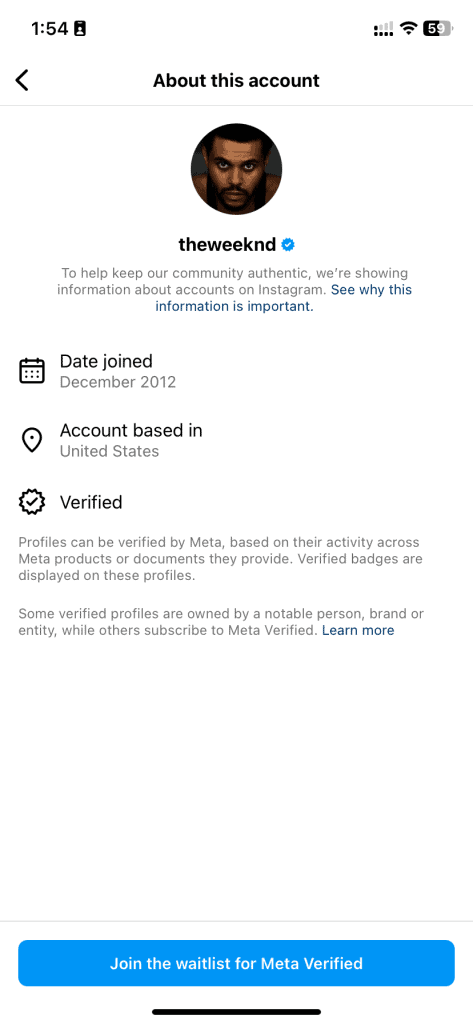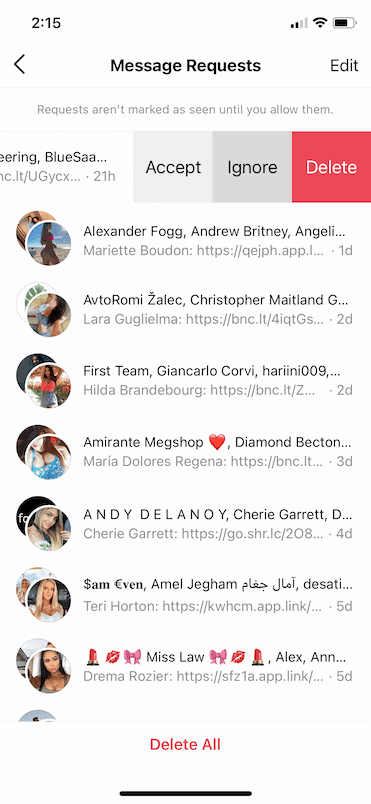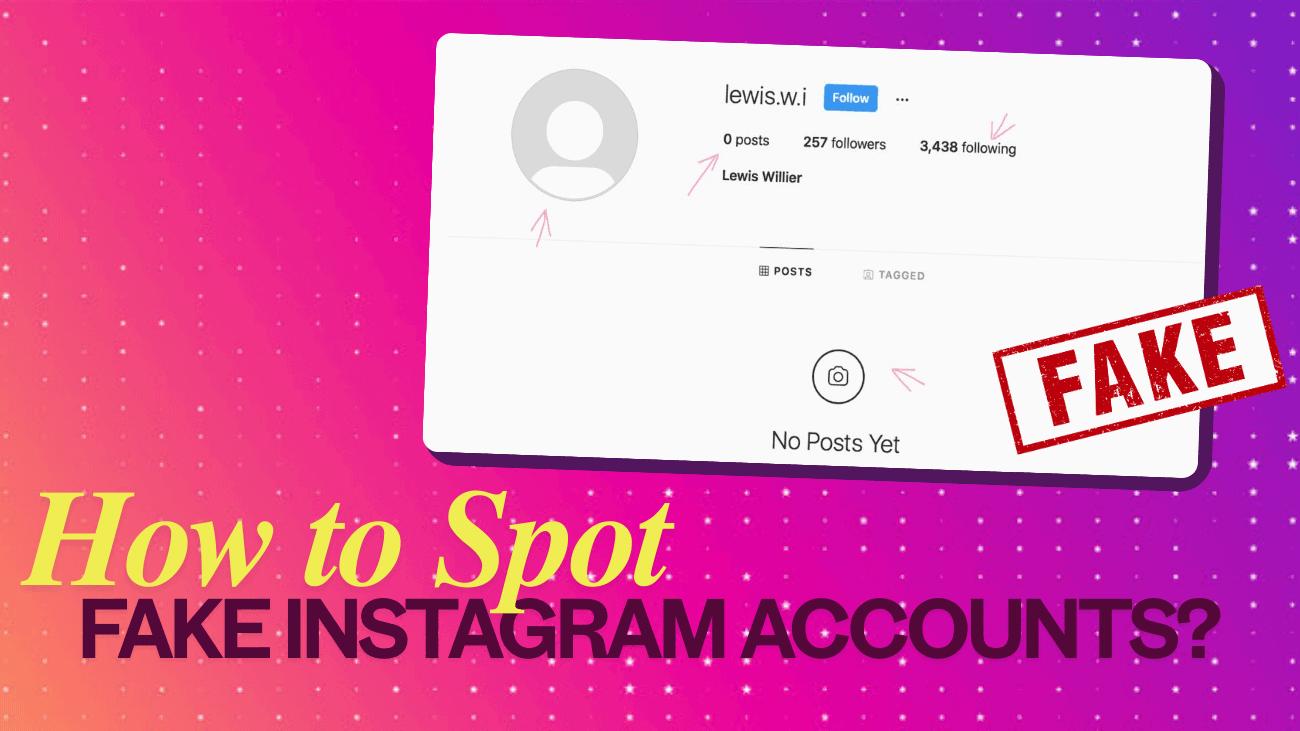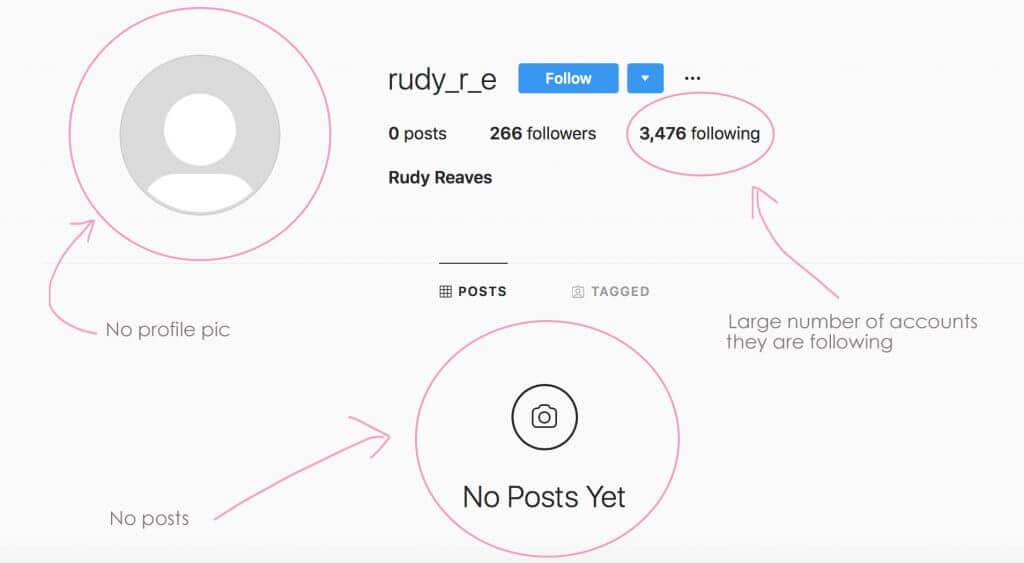Over the past decade, Instagram has become a vibrant community, now boasting over a billion monthly active users. However, with this incredible growth comes a darker side: the rise of fake accounts. If you’re wondering how to spot fake Instagram accounts, you’re not alone. A report from 2019 revealed that there were about 95 million fake accounts on the platform, making up around 9.5% of all users. That means, for every ten accounts you see, one of them isn’t real.
You’ve likely encountered those strange comments or direct messages that scream “scam” the moment you see them. But here’s the thing: these fake accounts are getting trickier, often adopting a more human-like tone that can be quite convincing.
These deceitful profiles are usually created by scammers with the aim of spreading misinformation, phishing for personal information, or even engaging in cyberbullying. The good news is that, as an Instagram user, you have the tools to recognize these fake accounts and help put a stop to them. In this article, we’ll dive into some simple ways you can identify and report these malicious profiles.
How To Spot Fake Instagram Accounts?
1. Check Out Instagram’s ‘About This Account’ Feature
Here’s a handy tip I found from a Reddit user. If you come across a profile that seems suspicious, tap the three dots in the top right corner for more options. From there, select ‘About This Account’—though keep in mind that some profiles might hide this feature.

2. Look for Inconsistent Content
Take a moment to compare the content on the page with the profile description. Sometimes, the two just don’t align.
For instance, if the Instagram bio claims the user is a beauty blogger but there are no makeup or skincare photos to be found, that’s a sign something might be off. Additionally, if you notice irrelevant hashtags or posts with low engagement that don’t seem to fit the account’s theme, it could indicate that the account is not genuine.
3. Spotting Red Flags in the Bio
When it comes to fake Instagram accounts, the bio often stands out as a telltale sign of inauthenticity. Here are some common inconsistencies to look for:
- Copied Bios: Many fake profiles lift their bios directly from real accounts, making only small tweaks like adding extra characters, numbers, or symbols to try to fly under the radar.
- Incomplete or Vague Information: You might find bios that are either too sparse or filled with generic phrases and spelling errors, which is often a sign of a fake account.
- Promotional or Irrelevant Content: Be wary of bios that are overly focused on promotions, link to external sites, or contain content that doesn’t align with the user’s claimed identity—these are major red flags.
4. Watch Out for Spammy DMs
Spammy direct messages (DMs) have been a common issue on Instagram. These messages typically show several warning signs:

- Generic Messages: Spam DMs often lack personalization and are sent to many users at once. You’ll notice they don’t address you by name.
- Too-Good-to-Be-True Offers: Be cautious of messages promising unrealistic opportunities, like winning large sums of money or exclusive deals.
- Phishing Links: These messages might contain links that lead to suspicious websites aimed at stealing your personal information.
If you receive messages promoting shady websites or asking for personal details under the guise of “brand partnerships,” it’s best to be skeptical. A simple request to communicate via email can reveal their true intentions—most won’t follow through.
5. Look for Random or Irrelevant Comments
Comments from fake accounts or spam comments tend to be quite obvious. They often consist of generic compliments, random emojis, or statements that don’t relate to the actual post.
If you see repetitive comments or a flood of similar messages across multiple posts, they’re likely generated by bots.
6. Be Cautious of Money Offers and Aggressive Promotions
Fake accounts often use enticing tactics to lure you in. They might promise quick ways to make money, win expensive prizes, or offer exclusive discounts.
Never share your personal information with these accounts. Engaging with them could result in financial loss, identity theft, or being scammed into buying fake products.
7. Analyze the Follower-to-Following Ratio
Fake accounts usually have a skewed follower-to-following ratio. They often follow thousands of users but have very few followers in return.
For example, an account that follows 5,000 people but has only 50 followers is a major red flag. Additionally, if most of its followers appear to be fake, that’s another sign that the account may not be genuine.
8. Identify Illogical Usernames
One of the key signs of a fake account is its username. These accounts often feature random combinations of letters and numbers or use slight variations of real usernames by adding symbols or digits.
While many creative Instagram usernames are already taken, there are usually clear indicators of a fake. For instance, consider the example of user @knutwylde.
A legitimate username might look like “johndoe123,” whereas a fake might appear as “j0hn_d0e_123” or “john_doe_!!” These subtle changes can easily mislead users into believing the account is real. Always take a moment to scrutinize the username for any odd patterns or variations.
9: Beware of Generic or Stock Photos as Profile Pictures
Many fake accounts opt for generic or stock photos as their profile pictures. While these images might initially seem appealing or trustworthy, they are often widely available online and lack authenticity.
Tip: If you’re feeling suspicious, try doing a reverse image search of the profile picture. If the image shows up on multiple sites or is identified as a stock photo, it’s a strong indication that the account is fake.
Additionally, be cautious of accounts using the default Instagram icon as their profile picture. Most genuine users take the time to personalize their accounts with a unique image, so a default icon is often a sign of spam.
Why It’s Important to Spot Fake Instagram Accounts?
Even if you feel confident about spotting scams, it’s not always straightforward. Scammers employ various tactics, including:
- Spreading Misinformation: These accounts can disseminate false information, damaging reputations, swaying public opinion, and even influencing elections.
- Cyberbullying and Harassment: Some fake profiles are created with malicious intent, targeting individuals and leading to cyberbullying and harassment.
- Financial Scams: Many fake accounts promote get-rich-quick schemes or sell fake products and services, resulting in financial losses for unsuspecting users.
Learning to spot these fake Instagram accounts is essential. It not only enhances your experience on social media but also helps maintain the integrity of the platform, contributing to a safer online community for everyone.
Common Types of Fake Instagram Accounts
Fake Instagram accounts can manifest in various ways, each with its own malicious intent. Here are some of the most common types:
- Bots: These are automated accounts designed to perform specific actions like liking posts, following users, or leaving comments. Often used to inflate engagement metrics, bots can flood your feed with spam.
- Impersonation Accounts: These accounts closely mimic real users by using their names, photos, and personal details. Their goal is to deceive followers, steal identities, or tarnish reputations.
- Scam Profiles: Created specifically to defraud users, scam profiles promote fake products, too-good-to-be-true offers, or engage in phishing to gather personal information. They often rely on enticing pitches to lure victims.
- Inactive or Incomplete Profiles: These accounts typically contain minimal information and show irregular activity. They might serve as placeholders for future scams or be used to artificially boost follower counts.
- Catfish Accounts: These profiles adopt fake identities, often using stolen photos to manipulate others emotionally or financially. Catfish accounts aim to establish deceptive relationships for exploitation.
While some people create fake accounts for less harmful reasons—like testing features or maintaining privacy—these profiles usually don’t engage in spamming or scamming other users. Understanding the different types of fake accounts can help you navigate Instagram more safely.
Wrapping Up
Fake accounts aren’t just a problem on Instagram; they can show up on any social media platform. It’s important to stay cautious on sites like Facebook, Twitter, and TikTok too. Scammers often use the same tricks everywhere, so being aware is essential.
Trust your gut; if something feels off, take a closer look. Your awareness can lead to a more genuine and enjoyable social media experience for you and others.


